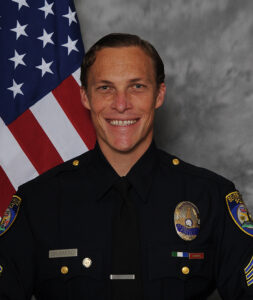Ideologically motivated violence continues to haunt every part of the American landscape, as does violence more generally. Homegrown violent extremists plot mass attacks on the innocent, and white supremacists terrorize the people they hate. Our children go to school fearing mass shooters, and houses of worship are targeted for their beliefs. In 2019 alone, there have been at least 19 deadly mass shootings in the United States, averaging one every 13 days.
As a lecturer and researcher on extremism, I have closely studied the many pathways our adversaries take as they perpetrate violence. But when we encounter mass attacks on religious institutions and schools, it sometimes seems like nothing is sacred anymore. Is there hope for us?
Yes, though it demands collective action.
After an episode of mass violence, there is commonly a knee-jerk reaction to bring in the “guns, guards and gates.” This is understandable, though not usually an effective solution for mitigating violence. However, there is one thing that is most often true: assailants pick their victims. They don’t attack randomly. By this, the worlds of the adversary and the potential targets are domains requiring constant examination. And they require something else. Us.
There are three ingredients that enable violent extremist behavior: an alienated individual, a legitimizing ideology (engaged through radicalization) and an enabling environment. Of the three, the environment is most susceptible to positive influences. As we work diligently to affect the radicalization pathway, communities can play a vital role in disrupting plots. Clear evidence of this is seen in the arrest of dozens of people threatening to commit mass attacks in the weeks following the August shootings in El Paso, Texas, and Dayton, Ohio. An energized public forwarded more than 38,000 tips to the FBI’s National Threat Operations Center during the first full week after the shootings. To be sure, lives were saved.
There is another element in the collective obligation to positively influence the environment, and that is to consider what happens to the survivors when attacks do occur. Studies indicate most survivors are resilient, but the path of grief is wide. Often, families and friends who lost or feared they would lose a loved one struggle with ongoing emotional and mental health challenges. As a tragic example, within a two-week period this year, two students who survived the Marjory Stoneman Douglas High School shooting took their own lives, as did the father of a girl who was killed in the 2012 Sandy Hook Elementary School. What is urgently needed is more purposeful and collective attention to communities struggling in the aftermath of mass violence.
These are complex issues requiring interdisciplinary efforts. In furtherance of the Safe Communities Institute’s mission of education, research and community engagement to respond these challenges, we look forward to important upcoming activities and hope you will be able to join us.
- October 14 – HVE & Protecting Houses of Worship – Harvard Club of New York City. A panel discussion among myself and policy experts Michael German and Rachel Grinspan.
- October 16 – HVE & Protecting Houses of Worship – A Conversation with Congressmember Karen Bass – USC Office of Research Advancement, Washington, DC
- October 17 – Leadership and the Challenges of National Security – Rubenstein Leadership Hall, Mount Vernon, VA. As part of the George Washington Leadership Lecture Series, the Sol Price School of Public Policy presents an interactive discussion between New York Times national security correspondent David Sanger and myself, moderated by Price Professor David Sloane.
- November 8 – USC 2019 Homegrown Violent Extremism Digital Summit Offered exclusively online and at no cost, SCI is bringing together experts to explore challenges in addressing HVE, offering methods and policies that can mitigate threats. Panels will examine surviving extremist violence, the role of digital media and the pathway out of extremism.
The more we mobilize our collective strength, compassion and dedication, the better positioned we are to make real progress in identifying threats, stopping attacks and supporting the victims. Join us as we continue to work toward a new understanding of public safety.




